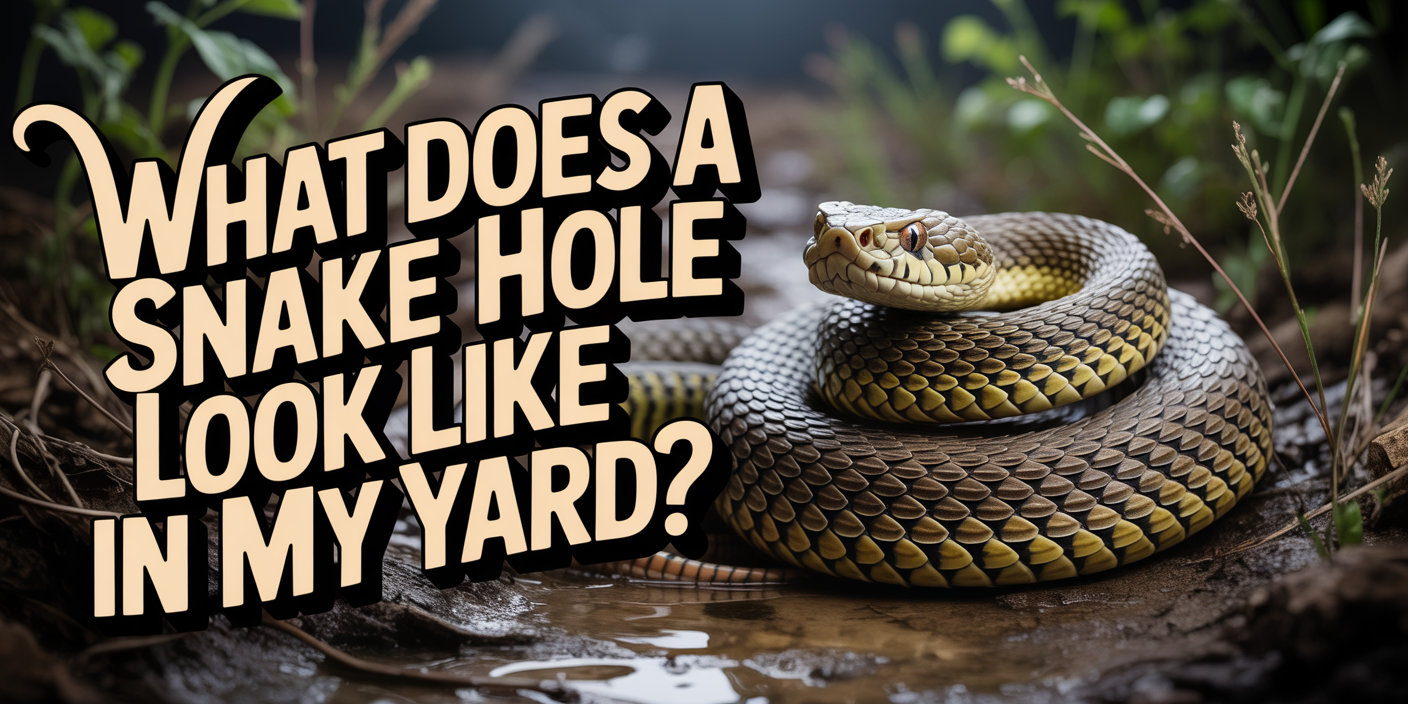A snake hole in your yard typically looks like a round, smooth-edged opening about 1 to 3 inches wide, often found near shaded or sheltered areas like foundations or woodpiles. You won’t see dirt mounds, claw marks, or debris around it, just a clean, stable hole that may show faint scale tracks or shed skin nearby.
You step outside, glance at the ground, and spot a small hole near the shed. Instinct kicks in, could it be a snake? That’s not something you want to guess wrong about, especially in places like Texas where both harmless and venomous snakes are part of the landscape.
At AAAC Wildlife Removal, we know how easy it is to confuse a snake hole with any random critter tunnel. From the size of the opening to subtle signs around it, understanding what a real snake hole looks like can help you avoid unwanted surprises. In this guide, we’ll show you exactly what to watch for, why it matters, and when calling a pro is the smart move.
Quick Signs That You Might Be Dealing with a Snake Hole
Not every hole in your yard means a snake has moved in. That’s why paying attention to small but telling details is key before jumping to conclusions. Snake holes have certain patterns that stand out when you know what to look for.
Here are quick signs that suggest you might be dealing with a snake hole:
- Round, Smooth Opening: Typically between 1 to 3 inches in diameter, without loose soil piled around the edge.
- No Visible Tunnel or Dirt Mounds: Unlike moles or voles, snakes don’t create visible surface tunnels or push dirt out of the entrance.
- Location in Quiet, Sheltered Spots: Found near foundations, under porches, or in overgrown areas where snakes feel protected.
- Absence of Animal Tracks: No claw or paw marks around the hole, just a clean opening.
- Possible Shed Skin Nearby: Seeing shed snake skin close to the hole is a strong indicator.
If two or more of these signs line up, chances are high it’s not just a random critter hole.
How to Identify a Snake Hole in Your Yard
When it comes to spotting a snake hole, the goal isn’t just to notice a hole, it’s about understanding the specific features that set it apart from other animal burrows. Let’s break down the key details into manageable parts so you’re not left second-guessing.
1. Hole Size and Shape Clues
Snake holes typically measure between 1 to 3 inches wide, just large enough for the snake’s body to slide through. The edges of the hole tend to look smooth and rounded rather than jagged or messy. You won’t usually see fresh soil or dig marks around it, especially if it’s a reused hole from another animal.
You should also notice that these holes don’t collapse easily. Because snakes often take over existing burrows rather than digging their own, the openings tend to hold their shape longer than random ground disruptions caused by weather or small rodents.
2. Location Patterns: Where Snakes Tend to Burrow
Snakes aren’t digging just anywhere, they look for areas that offer shelter and consistent cover. You’ll often find snake holes near home foundations, under decks, around rock piles, or next to sheds and woodpiles. These spots provide both warmth and hiding opportunities.
Another clue is proximity to water sources like ponds or drainage ditches. Many snakes prefer damp environments for hunting or cooling off, so it’s smart to check those areas more closely.
3. Visual Cues Around the Hole
Beyond the hole itself, the area around it tells a story. Snake holes usually won’t have signs of digging debris like dirt mounds or scattered plant roots. Instead, you might spot shed skin fragments or even faint scale patterns in nearby loose dirt.
Tracks are another giveaway, except with snakes, you won’t see paw prints. You might notice smooth, wavy lines leading in or out of the hole, especially after rain or in dusty soil. That’s where experienced wildlife pros, like AAAC Wildlife Removal, can step in and confirm things if you’re unsure.
Snake Hole vs. Other Animal Holes: How to Tell the Difference
Spotting a hole in your yard doesn’t automatically mean you’ve got a snake problem. Plenty of other animals dig or reuse burrows, so knowing the differences saves you from unnecessary stress or even unnecessary service calls. Here’s how snake holes stack up against more common backyard animal holes:
| Feature | Snake Hole | Mole/Vole Hole | Rodent Hole (Rats, Mice) | Chipmunk Hole |
|---|---|---|---|---|
| Opening Size | 1–3 inches wide | 1–2 inches wide | 2–4 inches wide | 1.5–2 inches wide |
| Edge Shape | Smooth, clean | Rough, with loose soil | Jagged or crumbling | Clean, often with debris |
| Dirt or Mounds Present? | No | Yes, small dirt mounds | Sometimes | Occasionally |
| Location | Sheltered, shaded areas | Near plant roots or lawns | Near buildings or sheds | Under decks, gardens |
| Visible Tracks Nearby | Smooth, wavy tracks | None or faint paw prints | Paw prints or tail drag | Paw prints |
| Other Clues | Shed skin, scale marks | Raised tunnel ridges | Gnaw marks on wood | Food debris nearby |
If the hole you’re seeing fits most of the “snake hole” traits, there’s no sense playing the guessing game. Professional wildlife removal can confirm what you’re dealing with before things escalate.
Why Leaving Snake Holes Untouched Can Be Risky
It might feel easier to ignore a hole and hope whatever’s living there moves along, but that’s not the safest call when snakes are involved. In areas like Dallas and across Texas, some common yard snakes include species that aren’t just harmless pest controllers, we’re talking about venomous types like copperheads or rattlesnakes showing up where you least expect them.
Leaving a snake hole undisturbed increases the chance of accidental encounters with pets, kids, or even yourself while doing yard work. Venomous snakes don’t always give warnings before striking, especially if they feel cornered or surprised near their shelter spot. That’s exactly why wildlife removal experts exist, to step in before things turn into an emergency.
On top of the safety factor, there’s also the property damage angle. Snakes sometimes reuse and expand old animal burrows, which can undermine shed foundations, patios, or rock walls if left unchecked. While it’s not as dramatic as a raccoon in the attic, a hidden snake burrow can still cost you in repairs if you ignore it too long.
Don’t Second-Guess Snake Holes Get Expert Eyes on It
When you spot a hole in your yard that looks suspicious, it’s not just about curiosity, it’s about safety and peace of mind. Snake holes have specific clues, from size and shape to location and surrounding signs, but guessing wrong can lead to risky encounters or overlooked hazards.
Instead of second-guessing what’s living under your feet, let AAAC Wildlife Removal handle it. Our team knows exactly how to confirm, manage, and safely remove snake-related issues from your property. One call could save you a lot of unnecessary stress.
How AAAC Wildlife Removal Handles Snake Hole Problems
Not sure if that hole in your yard belongs to a snake? Don’t leave it up to guesswork. At AAAC Wildlife Removal, we specialize in identifying and safely handling snake issues without putting your family or property at risk.
From thorough inspections to humane removal and long-term prevention strategies, our team is ready to help you reclaim your yard with confidence. Call AAAC Wildlife Removal today for professional snake hole inspection and removal services, because peace of mind starts with expert help.




